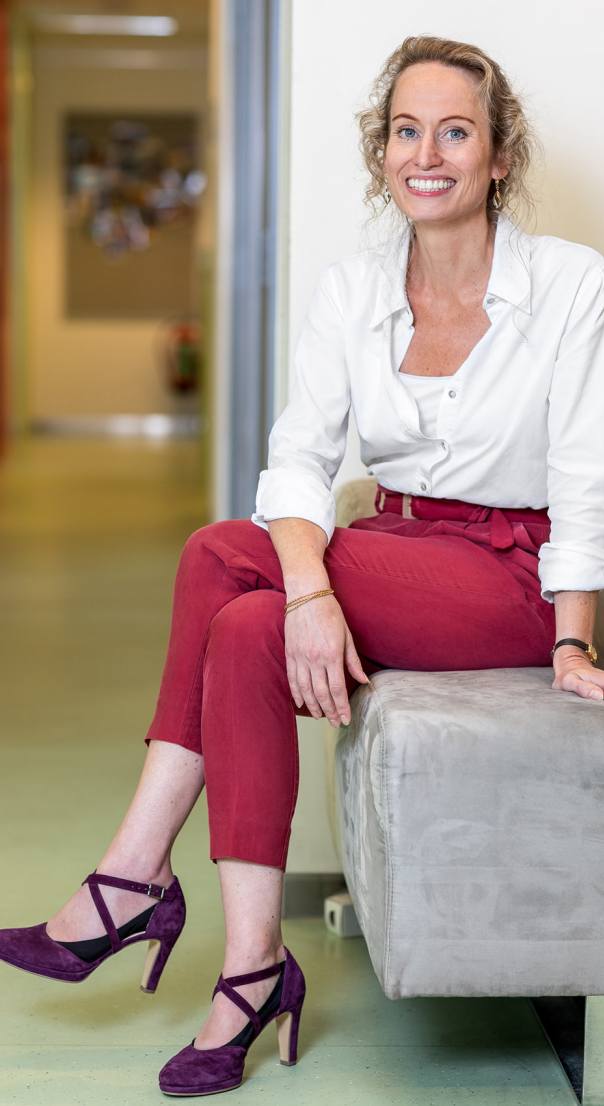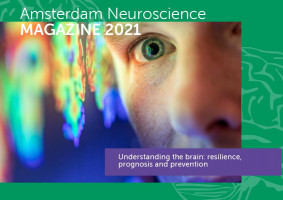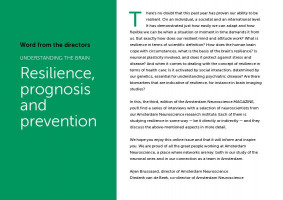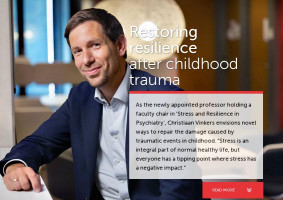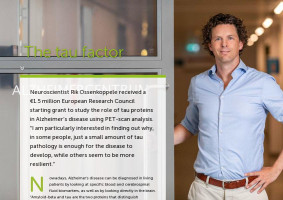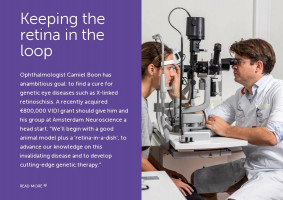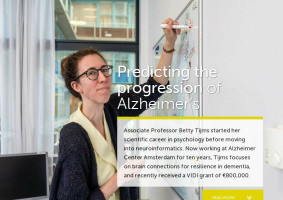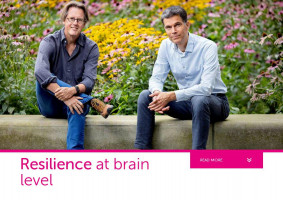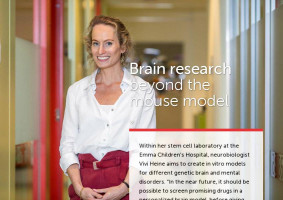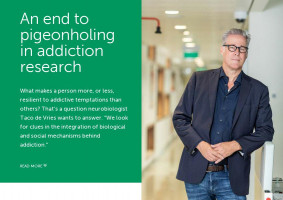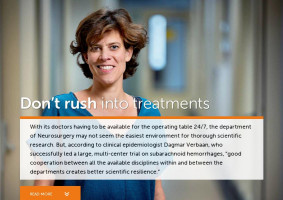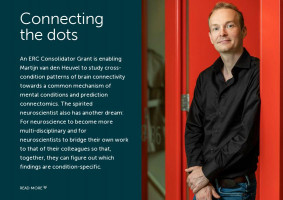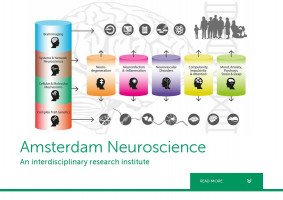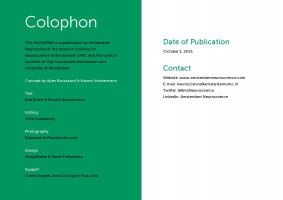Within her stem cell laboratory at the Emma Children’s Hospital, neurobiologist Vivi Heine aims to create in vitro models for different genetic brain and mental disorders. “In the near future, it should be possible to screen promising drugs in a personalized brain model, before giving them to the actual patient with schizophrenia, autism or other psychiatric or neurological disease.”
“There’s no doubt that mice have brought us a lot in neurological research, but they have an important shortcoming too,” says Associate Professor Vivi Heine. “In many neurological and psychiatric disorders, there is a strong genetic component. And despite being extremely valuable for our research, mice are genetically still quite different from humans. In mouse models we can usually modify only one gene per strain, which is a significant limitation to our research.”
Stem cell lab
It was with that shortcoming in mind, that Heine was asked, just over a decade ago, to start a stem cell lab at Amsterdam Neuroscience. “Research with induced pluripotent stem cells has evolved rapidly since its first discovery in 2006,” Heine explains. “Today, we are able to simply take a blood sample and ‘transform it back’ into stem cells that can become any cell we want, when given the right environment. This is extremely valuable in diseases with a strong genetic component, like many neurological and psychiatric disorders. It means we can take blood from a patient and create a cell culture with the exact same genetic make-up. This is not only of great importance for research into the pathophysiology of a disease, it also creates the potential opportunity for autologous transplants, where the patient is their own stem cell donor. Transplanting new cells that produce fresh dopamine for patients with Parkinson’s disease could become an option. The risk of immunological rejection of these cells would be diminished in those cases.”
Precision psychiatry
Apart from the enormous value that induced pluripotent stem cells already have in research and potentially will have in transplantation for neurological disorders, there is a third, very promising, application that Heine is working on with her cell cultures. “Major psychiatric conditions are highly heterogeneous and may relate to different causal mechanisms. For example, different genetic risk profiles underlie schizophrenia. These different causal mechanisms are one of the reasons why the development of new medication for these diseases is as slow as it is. But what if we could create a ‘brain-in-a-dish’ model for each genetic type of patient? That would give us the opportunity to test various drugs on the different genetic subtypes of a disease in the lab. Only after getting a ‘match’ between a certain drug and a genetic subtype of a disease could you actually start administering that drug to the patient. It would create, so to say, a possibility to perform precision medicine in psychiatry.”
Cooperation
Heine stresses that her visions of precision psychiatry are not vague images from a crystal ball. “I truly believe that, before too long, we could have the first practical applications of these cell cultures of individual patients. But it will take quite a bit of effort and, above all, a lot of cooperation with different fields. First, we need to work closely with experts in human cellular biology and network behavior, to check if our ‘brains-in-a-dish’ resemble the brains of the actual patients closely enough. There is, of course, more to pathophysiology than just the genetic profile of the neuronal cells. And where we envision transplantation of stem cells in the brains of, for example, patients with Parkinson’s disease, we will seek cooperation beyond the field of neuroscience. For example, hematologists also face the challenges of manufacturing clinical-grade induced pluripotent stem cells.
“Genetic factors are significant in the capacity of resilient responses to stress and trauma and to maintain healthy brain networks. With the development of induced pluripotent stem cells, we can now study how complex genetic make-ups affect cellular behavior and what pathways we need to tackle to encourage adaptations and rebuild resilience in patients with neurological diseases.”
Photography: Marieke de Lorijn
